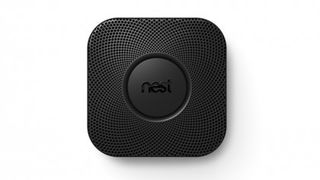From Apple to appliances: how Nest is making everyday items relevant again
The creator of Nest Protect speaks to TechRadar
App connected
The alarm works in unison with an app, so if you aren't in the house you have an 'at a glance' look to see if your home is smoke and fire free and it will also constantly check itself to see if there are any problems with the alarm.
"If there has been smoke then this can block sensors, so Nest makes sure that everything is in working order.
"The gritty oily smoke can damage the sensors, so Nest Protect tests itself every 10 minutes. Nothing you can hear but it will let you know if any of the internals aren't working."
As for what happens when there is an actual issue, Nest Protect will let you know with a conventional alarm but also a voice command.
"The warning has to be right. We can't tell people to get out of the house as that may not be the right thing, that would be like a smoke alarm beeping at you when you have burned the toast – it is unnecessary. We are giving you enough information for you to take action," says Fadell.
Vital information will also appear on the accompanying app, something Fadell thinks is essential to helping Nest Protect users if there is an emergency.

"Today's alarms go beep. But you are discombobulated when you get the beep so we will also give you the steps you need to do in every type of emergency and the phone number for emergency services. This is all within the app so you know exactly what to do if there is some sort of emergency."
Get daily insight, inspiration and deals in your inbox
Get the hottest deals available in your inbox plus news, reviews, opinion, analysis and more from the TechRadar team.
Premium price
One of the hangovers from Apple that is also apparent is the price of Nest Protect. It is coming to the UK for £109, and is $129 in the US.
Fadell is understandably unfazed by the price, believing the technology warrants the price tag and the places it is being sold proves it is a device for all.
"We are the first smoke alarm in the Apple Store and it is the first device that hardware stores carry that can also be found in the Apple Store. The stores like this association," he says.
"And it just shows who is buying Nest - it is everyone."
"When I think of the Internet of Things, I see it as internet 1.0."
Fadell is adamant that Nest Protect, despite its premium, is not technology for technology's sake and it is using connectivity to "solve a real pain point".
And this is what he sees as his issue with more and more household appliances taking advantage of a Wi-Fi signal – he believes that for the most part it is needless.
"When I think of the Internet of Things, I see it as almost internet 1.0. Back in '95 and '96, everyone rushed to the internet and put books and other things online and did the same things that they normally do but virtually. The experience didn't change," explains Fadell.

"It took web 2.0 to change the experience. To understand the apps and the models and the experience was changed. That's when the big things happen. At the moment people aren't buying into the internet of things."
"People are like, I am going to bash Wi-Fi with a toaster, or with a kettle. The other day I saw that someone was doing it with a water bottle. It doesn't make sense.
"You have to think about the entire experience of the product. Once you rethink the entire product, then connectivity is right.
"There are some products that can be rethought with connectivity. We are showing this at Nest but not everything needs to have the full smartphone experience."
- Never mind the Internet of Things, here's some surprising devices that run Android
Marc Chacksfield is the Editor In Chief, Shortlist.com at DC Thomson. He started out life as a movie writer for numerous (now defunct) magazines and soon found himself online - editing a gaggle of gadget sites, including TechRadar, Digital Camera World and Tom's Guide UK. At Shortlist you'll find him mostly writing about movies and tech, so no change there then.

